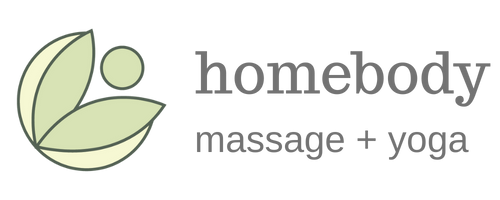The Breath: in Massage and in Life
On any given day, we take about 20,000 breaths. In and out, the breath maintains our livelihood. Yet rarely are we aware of many, if any, of those inhalations and exhalations. So, what happens when we consciously bring awareness to the breath?
At the start of each massage, both Sasha and I begin the session by leading our clients through a few breaths. In doing so, we bring your awareness to your breath, allowing the tension in both the mind and body to begin to soften. You become more present in the moment, and the bouncing thoughts of life, be it stress, worry, anxiety, excitement, etc., slowly fade away. That stress response of the sympathetic nervous system lessens, and the healing and digestion of the parasympathetic nervous system activates. Your bodily systems work more effectively. You also begin to notice the tension held within your musculature, and therefore, you can begin to release that tension you’ve now become aware of. By setting this foundation, we intend to set you up for a massage that is most effective in aiding all of the body’s systems. This all starts by simply bringing awareness to the breath. When the breath and the massage work in tandem, we prime your parasympathetic nervous system for high-level performance.
And yet, the mind is a strong muscle. Ever so slyly that mental activity, those thoughts, feelings and emotions, creep back in. You’re still receiving a lovely massage, but you’re also lying in worry about the future or analyzing the past. Don’t worry, this is common. And we also feel this is part of our work as massage therapists; we know the body and mind are deeply connected, two sides of the same coin. We will prompt a return to the breath throughout the massage, especially if we feel increased tension or sense that you’ve “left the room” mentally. At the same time, we encourage you to practice breathwork independently. Practice throughout your massage and throughout your day in order to develop an increased awareness of oneself, induce a state of calm, and cultivate a healthier relationship with mind and body.
We recognize this is easier said than done. Which is why breathwork is a practice. There is no predetermined number of breaths to achieve, no particular state of mind or well-being you are seeking to accomplish. Rather, we practice breathwork to become more aware of ourselves, to give our minds and bodies respite, and ultimately to learn. Awareness, patience, curiosity, and non-judgment are pillars to a well-framed breath practice. Massage the mind with breath.
The Practice:
One foundational pranayama, or breath practice, is Dirgha Pranayama or deep belly breath. The belly breath is grounding and relaxing. It’s a go-to practice whenever I feel overwhelmed, irritable, or anxious. The belly breath goes as such: as you inhale and without strain, fill the space above your navel with breath, like a balloon. As you exhale, release all of the air out of the balloon. Again, fill the abdomen with breath without strain, noting how the belly rises as you inhale. As you exhale, release all of the breath within. Rinse and repeat. Notice the expansion of the belly in front of you, and also notice the expansion of your rib cage, and of your back. Cultivate a breath which expands your center 360 degrees. See below for an instructional video from Sasha. Use any time.
date written: 3/18/2024
written by: Cody Quattrocci
